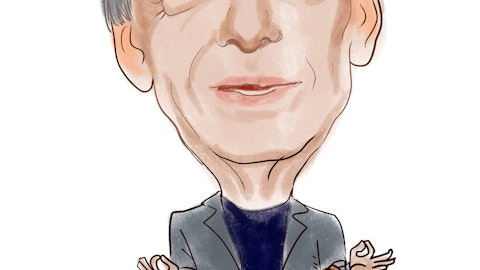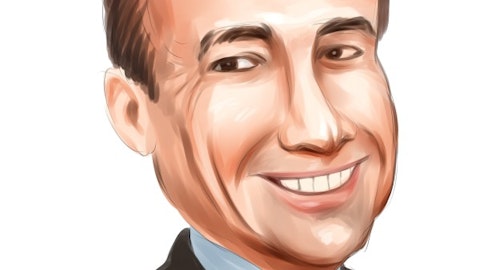In a recent research note to clients, Morgan Stanley (MS) identified a list of dividend stocks that it considers “safe and fundamentally and quantitatively attractive.” The investment bank concludes that the current low-yield environment makes high dividend yields of stable companies highly desirable. Treasury yields are breaching new lows, while the S&P500 index is generating a low yield of 2.2%. Many stocks with strong fundamentals are yielding double the comparable rates on Treasuries and the broad market.
The bank also argues that the current payout ratio for the broad market is near historical lows—hovering around 30%, according to research by Yale professor Robert Shiller—which gives room to potentially significant dividend hikes in the future. Although the beneficial tax treatment of long-term dividends may expire soon, Morgan Stanley believes that development should not reduce the appeal of dividend stocks with strong fundamentals.
Below is an overview of five “safe and fundamentally and quantitatively attractive” dividend stock picks by Morgan Stanley.
Freeport-McMoran Copper & Gold Inc. (FCX) is a copper and gold producer with market capitalization of some $32 billion. The company expanded its EPS by an average rate of 7.6% a year over the past five years. It is expected to grow its EPS by 5.7% a year for the next five years. Freeport pays a dividend yield of 3.7% on a low payout ratio of 31%. The company resumed dividends after a 2009 pause, and since 2010 has nearly tripled them. Its competitors, Newmont Mining (NEM) and Southern Copper Co. (SCCO), pay dividend yields of 2.7% and 7.2%, respectively. Freeport is undervalued relative to its 5-year average P/E and the industry and market P/Es. Fund managers Ken Fisher and Ken Heebner are fans of the stock.
Chevron Corporation (CVX) is an oil, natural gas, and geothermal energy company with nearly $200 billion in market capitalization. The company has grown its EPS by 11.5% a year over the past five years. Analysts expect that it will continue to boost its EPS by a lower rate of 5.1% per year for the next five years. Chevron pays a dividend yield of 3.6% on a low payout ratio of 26%. The company has paid dividends since 1921, and has raised its dividend by 9% per year over the past five years. Its peers Exxon Mobil (XOM) and ConocoPhillips (COP) pay dividend yields of 2.9% and 4.9%, respectively. The company appears to be undervalued relative to its 5-year average P/E and the S&P500 ratio. The stock is popular with financier George Soros, who purchased it in the first quarter of 2012 (check out George Soros’ new picks).
Staples Inc. (SPLS) is the largest U.S. office supplier with a market capitalization of nearly $9 billion. The company’s EPS grew by an average rate of 1.2% per year over the past year. The EPS growth is expected to accelerate notably over the next five years, to 10.7% a year for the next five years. The company pays a dividend yield of 3.4% on a low payout ratio of 32%. The company has paid dividends since 2005, and has increased them by an average rate of 7.2% a year over the past five years, despite a negative operating environment. The company’s peers, namely Office Depot (ODP) and OfficeMax (OMX), do not pay any dividends. Staples’ stock is substantially undervalued relative to its own 5-year average P/E and the industry’s ratio. Donald Yacktman purchased a stake in the company in the first quarter of 2012.
MetLife Inc. (MET) is a holding company for Metropolitan Life Insurance Company, one of the largest U.S. providers of insurance, annuities, and employee benefit schemes. The company expanded its EPS by an average rate of 11.7% a year over the past five years. Over the next five, analysts forecast that the company’s EPS will grow by an average rate of 10.5% per year. MetLife pays a dividend yield of 2.5% on a payout ratio of 14%. The company has kept its dividend rate frozen since 2007. Its rivals Allstate Corporation (ALL) and Progressive Corporation (PGR) pay dividend yields of 2.6% and 1.9%, respectively. MetLife is undervalued relative to its industry peers and the broader market. Billionaires Ken Griffin, John Paulson and Leon Cooperman are fans of the stock (see John Paulson’s top stock picks).
St. Jude Medical Inc. (STJ) is a U.S. medical device maker with market capitalization of $12 billion. The company has increased its EPS by 11.4% a year over the past five years. Analysts forecast that the firm’s EPS will rise at a rate of 10.3% a year for the next five years. St. Jude Medical pays a dividend yield of 2.4%, well above the yield on the 10-year Treasury and slightly higher than the S&P500 yield. The company has been raising and cutting its dividend at several occasions in the past decade. Its peer Medtronic (MDT) yields 2.6%, while Boston Scientific Corporation (BSX) does not pay any dividends. The company is undervalued relative to its own 5-year average P/E and the industry average ratio. Fund manager Andreas Halvorsen and billionaire Jim Simons’ Renaissance are fans of the stock (see Jim Simons’ top stocks).






